The handouts and guides below refer to the 6th edition of the APA Style Manual. USE this guide only if your instructor requires that you follow the older APA rules.
For the most recent and current version of APA style, refer to our NEW! APA Style 7th edition.
Many databases now create a citation for you. Watch our video, How to Use Citation Tools in Databases and read the screen carefully in each database to locate the citation tool. ALWAYS check the database citation for errors by checking it against our Library citation guides--learn how by watching our video Creating Flawless Citations.
List materials cited in the body of the paper in the “References” section located at the end of the paper. Organize references alphabetically by the first author’s last name; start each entry with a hanging indent, and use double spacing, like this:
Henry, W. A., III (1990, April 9). Beyond the melting pot. Time, 135, 28-31.
Smith, S. P. (2018). Instagram abroad: performance, consumption and colonial narrative in tourism. Postcolonial Studies, 21(2), 172-191. doi:10.1080/13688790.2018.1461173
Include all information necessary for someone else to find the same resource.
In the example citations below, Author, A. A. means last name followed by first initial and middle initial (if given). For instance, the name Tina Wu would appear as Wu, T. in a reference list.
If there is no author, begin the citation with the document title, then put the publication year in parentheses. If there is no date, put “n.d” in parentheses.
Author, A. A. (Year). Title of book. Place of Publication: Publisher.
Saunders, G. (2000). Pastoralia: stories. New York: Riverhead Books.
Ebook
Author, A. A. (Year). Title of book. Place of Publication: Publisher. Retrieved from URL
Freud, S. (1999). Leonardo Da Vinci: A memory of his childhood. London, England: Taylor & Francis. Retrieved from http://www.netlibrary.com
Chapter or article in an edited book
Author, A. A. (Year). Title of part. In Editor’s Name (Ed.), Title of book (Edition, Vol. Number, pp. Pages). Publication location: Publisher.
Massaro, D. (1992). Broadening the fuzzy logical model. In H. L. Pick, Jr., & D. C. Knill (Eds.), Cognition: Conceptual issues (2nd ed., Vol. 2, pp. 51-84). Washington, DC: American Psychological Association.
When a DOI is available, always include it. Find the DOI at CrossRef (search.crossref.org). If there is no DOI, use the journal’s URL. If it is an article in print, end the citation after the page numbers.
Author, A. A. (Year). Title of article. Title of Journal, Vol. Number(Issue Number), Pages. DOI
Stultz, J. (2006). Integrating exposure therapy and analytic therapy in trauma treatment. American Journal of Orthopsychiatry, 76(4), 482-488. doi:10.1037/0002-9432.76.4.482
Journal article with multiple authors
For articles with two to seven authors, include all authors’ names. For articles with eight or more authors, include the first six author’s names, then three periods, and then the last author’s name.
Author, A. A., Author, B. B., Author, C. C., Author, D. D., Author, E. E., Author, F. F., & Author, H. H. (Year). Title of article. Title of Journal, Vol. Number(Issue Number), Pages. DOI
Philips, L., Allen, R., Bull, R., Hering, A., Kliegel, M., & Channon, S. (2015). Older adults have difficulty in decoding sarcasm. Developmental Psychology, 51(12), 1840-1852. doi:10.1037/dev0000063
Author, A. A. (Year, Month Day). Article title. Newspaper Title. Retrieved from URL
Hilts, P. J. (1999, February 16). In forecasting their emotions, most people flunk out. The New York Times. Retrieved from http://www.nytimes.com/1999/02/16/science/in-forecasting-their-emotions-most-people-flunk-out.html
Newspaper article in print
Author, A. A. (Year, Month Day). Article title. Newspaper Title, pp. Pages.
Schwartz, J. (1993, September 30). Obesity affects status. The Washington Post, pp. A1, A4.*
*This example shows non-consecutive page numbers.
Author, A. A. (Year, Month Day). Article title. Magazine Title, Vol. Number(Issue Number), Pages. Retrieved from URL
Kandel, E. R., & Squire, L. R. (2000, November 10). Neuroscience: Breaking down scientific barriers. Science, 290, 1113-1120. Retrieved from http://www.sciencemag.org
Magazine article in print
Author, A. A. (Year, Month Day). Article title. Magazine Title, Vol. Number(Issue Number), Pages.
Kandel, E. R., & Squire, L. R. (2000, November 10). Neuroscience: Breaking down scientific barriers. Science, 290, 1113-1120.
Author, A. A. (Year, Month Day). Web page title. Retrieved date from URL
Brown, M., & Mendis, N. (2018, July 25). The separation of immigrant families: historical anecdotes. Retrieved August 15, 2018, from http://cmsny.org/from-the-cms-archive-separation-of-families/
If there is no discernible author, begin the citation with the document title, then put the publication year in parentheses. For more help & examples, see the APA blog.
Video Creator. (Year, Month Day). Video title [Video file]. Retrieved from URL
Norton, R. (2006, November 4). How to train a cat to operate a light switch [Video file]. Retrieved from http://www.youtube.com/watch?v=Vja83KLQXZs
Follow the Bluebook style as closely as you can. Treat legal citations as works with no authors. Order them alphabetically according to the first significant word or abbreviation in the entry. Examples:
Court case
Mapp v. Ohio, 367 U.S. 643 (1961).
Statute
Mental Health Systems Act, 42 U.S.C. § 9401 (1988).
Federal regulation
FTC Credit Practices Rule, 16 C.F.R. § 444 (1999).
Constitution
U.S. Const. art. I, § 3.
For more examples, see How to Cite Legal Materials.
For full instructions, see the Publication Manual of the American Psychological Association, Appendix 7.1.
Quoting, paraphrasing, and summarizing are the three ways in which you may incorporate external sources into your paper.
Quoting
When you are quoting directly from a text, you must provide the name(s) of the author(s), year, and the page number(s) for the reference. If there are no page numbers, number the paragraphs and use them as part of the citation. For short quotation (fewer than 40 words) begin and end with double quotation marks. Examples:
According to Gregory Rodriguez (2005), one of the major problems of bilingual education had to do with the fact that “the bilingual education lobbyists were less concerned with making sure it was benefiting the children it served” (p. 151).
The supporters of bilingual education programs “consistently opposed any attempts to reform it” (Rodriguez, 2005, p. 151).
Long quotations (more than 40 words) are in a block with no quotation marks, and indented 5 spaces from the left margin.
Paraphrasing and summarizing
Paraphrasing means restating another person’s idea in your own words. Summarizing means using your own words to report the essence of the passage with fewer words than the original source uses. Each paraphrase and summary has to be documented: include at least the author’s last name and the publication year. Include the page numbers to refer the reader to a specific part of the text, if applicable. Put quotation marks for word phrases that you cannot substitute with your own words. Example:
According to Zapf & Jung (2006), “criminal responsibility” can be evaluated by referring to information from the defendant’s interview, and forensic test results (p.340).
Formating in-text citations
| 1 author | (Amer, 2000, p. 25) |
| 2 authors | (Budd & Cochran, 1980, p. 25) |
| 3–5 authors, first reference | (Dill, Edelman, Fa, & Giuseppe, 1995, p. 20) |
| 3–5 authors, subsequent references | (Dill et al., 1995, p. 85) |
| 6+ authors | (Hosslyn et al., 2005, p. 90) |
| No date provided | (Inez, n.d., p. 180) |
| Multiple pages being cited | (Juola, 1995, pp. 130-135) |
| Entire work being cited | (Kala, 2000) |
| Indirect source | Lao indicated ... (as cited in Mains & Nguyen, 2010). |
For more examples of in-text citations, see the University of Maryland's APA citation guide.
 Publication Manual of the American Psychological Association
Publication Manual of the American Psychological Association
On their website, the APA explains why adopting and following a documentation style matters as follows:
To achieve this clarity of communication, publishers have developed rules of style. These rules are designed to ensure clear and consistent presentation of written material. Editorial style concerns uniform use of such elements as
When editors or teachers ask you to write in APA Style®, they are referring to the editorial style that many of the social and behavioral sciences have adopted to present written material in the field.
The APA makes an effort to keep their manual up to date. In between editions, however, new information sources emerge. The APA blog fills in the gap.
Search its contents to see how you should cite Twitter, Facebook, and a host of other new media or unusual sources.
